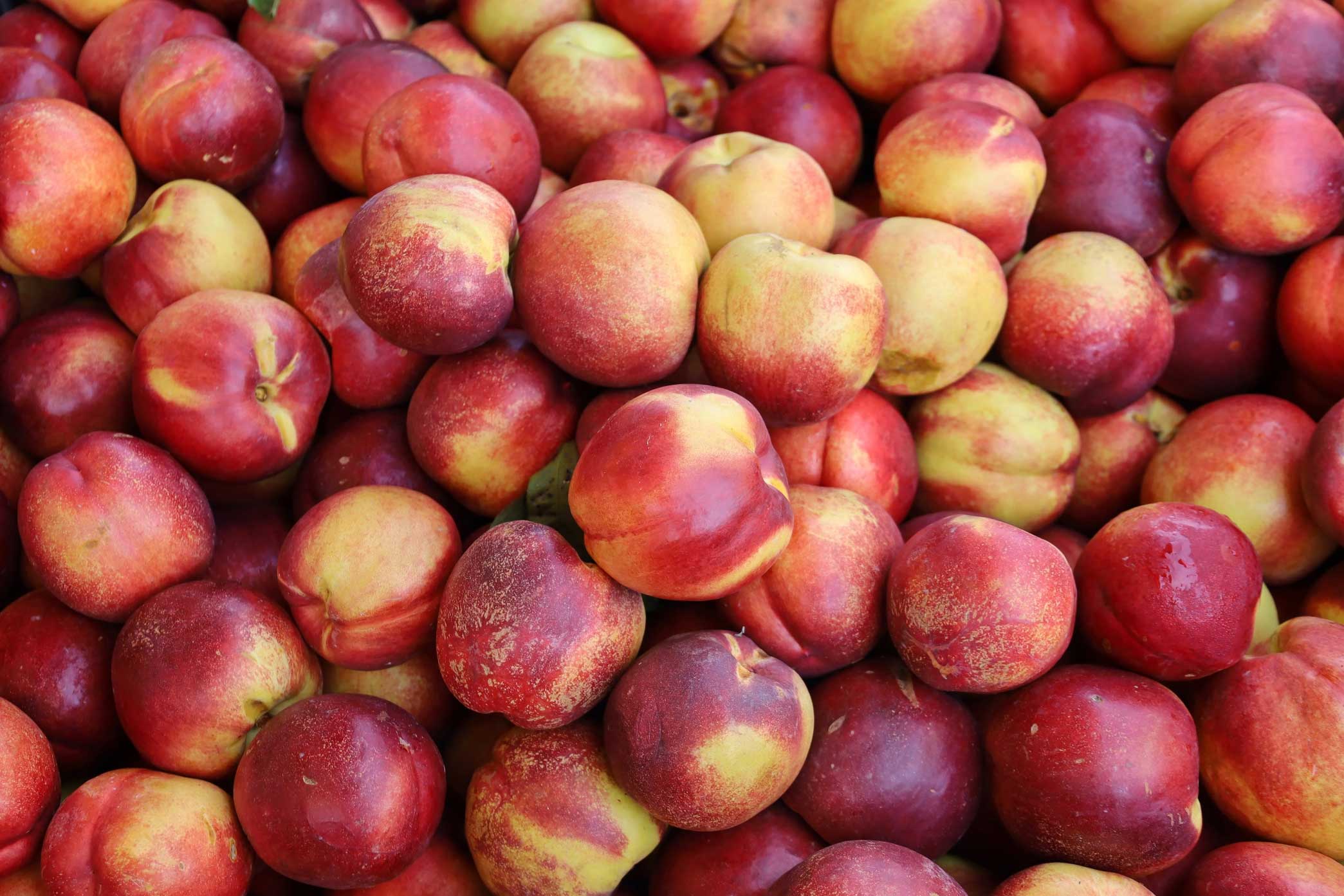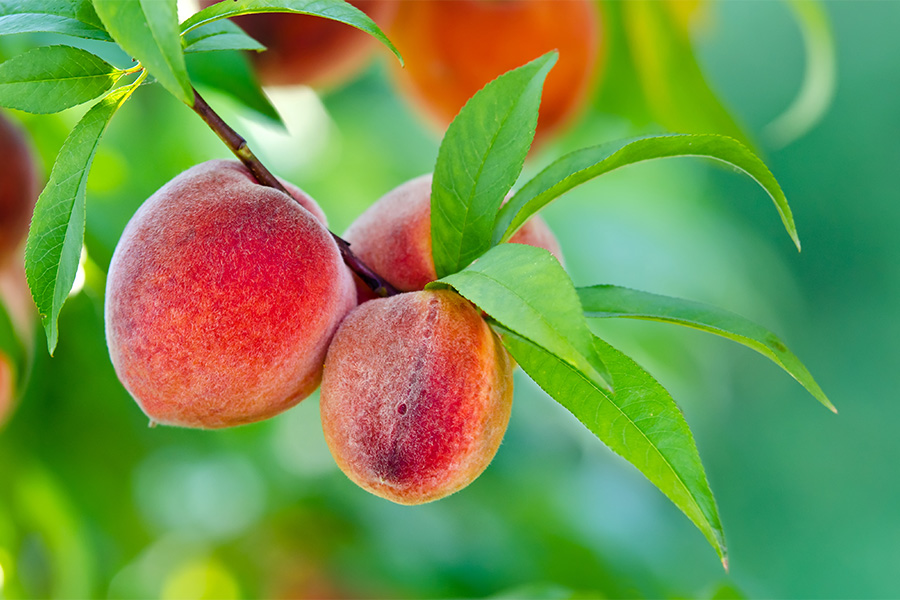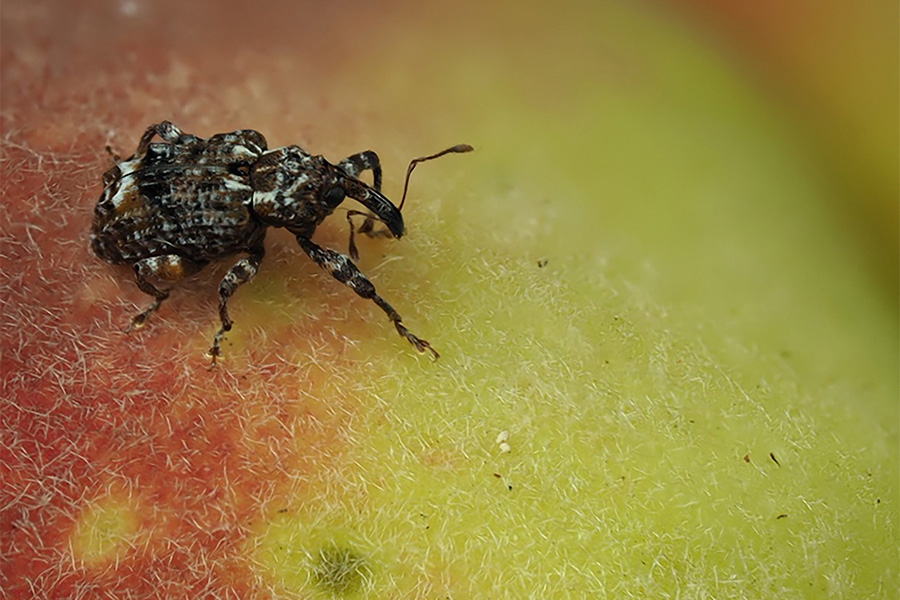Peaches
-

This guide covers multiple states and production areas. Pest problems vary across the Southeast. Pesticide rates are a guideline. Exceptions are noted for specific locations and pests, but this guide does not list every exception. Listed pesticides may not be registered for the uses recommended here in all states.
This guide is to be used only by commercial growers. Observe all label precautions and recommendations. Brand names of pesticides are given in the spray schedule as a convenience to the grower. They are neither an endorsement of the product nor a suggestion that other products with the same active ingredient are not effective.
Phillip M. Brannen, Dario Chavez, Brett R Blaauw, and Allison Faye Johnson
|
-

San Jose scale, Comstockaspis perniciosus (Comstock), is a pest of peaches, nectarines, plums, and other tree fruits including apples, pears, and cherries. San Jose scale is considered a secondary pest in many regions of the country, but in the Southeast U.S., it has been one of the most common and most destructive pests to the peach industry since the early 2000s.
Brett R Blaauw
|
-

This resource is for peach producers, pickers, packers, and shippers, and provides maturity indices and postharvest handling recommendations for fresh-market peaches to reduce peach postharvest losses and prevent quality deterioration, recalls, and loss of value during the production and trade of peaches in the Southeastern U.S.
Orestis Giannopoulos, Dario Chavez, and Angelos Deltsidis
|
-

Plum curculio, Conotrachelus nenuphar (Herbst), is a key insect pest of peaches in the Southeast region of the United States. It is a snout beetle native to North America and is found east of the Rocky Mountains in the U.S. and Canada. Plum curculio drives the insect pest management program for Georgia peach producers. This circular covers the biology, damage, and current management recommendations for plum curculio in Georgia peach production.
Brett R Blaauw and (Jean) Tzu-Chin Liu
|
-

SB 48-05
Home Orchard
This section of the Home & Garden Edition covers pest control in home orchards, including apples, peaches, bunch grapes, muscadines, strawberries, blueberries, and other fruits. Beginning in 2022, the Home & Garden Edition has been updated biennially. When purchasing a product based on a first-year recommendation of the Handbook, check the current product label before purchase to be sure it is still labeled for the use for which you are buying it. For pesticide products you have on hand from earlier purchases, you are allowed to use them until they are depleted without penalty under the law. Always follow label instructions before use. Contact the product’s manufacturer for the most up-to-date label.
Harald Scherm, John N. All, Brett R Blaauw, and Allison Faye Johnson
|
-

C 1253
Phony Peach Disease
This fact sheet covers phony peach disease: History, symptoms, disease cycle, and management.
Phillip M. Brannen and Kendall Anderson Johnson
|
-

C 1063
Home Garden Peaches
Learn about how to grow peaches at home in Georgia. Peaches are not native to North America; however, many cultivars have been developed for our area, and Georgia has a long history of successful peach production. This resource includes information about site selection and preparation, planting, fertilizing, insects, diseases, and harvesting. Recommended peach varieties for Georgia are also listed.
Dario Chavez and Jeff Cook
|
-

The southeastern peach industry is known for the high quality of its fresh peaches. As a new peach season approaches, it is time to ready the packinghouse for output of the best peach product.
Dario Chavez
|
-

When the peach tree moves into its bearing years a shift in emphasis from exclusive attention to vegetative development for building a tree structure to maintaining a balance enough vegetative growth to promote adequate fruiting wood and return bloom for the following season’s fruit crop and managing the current season’s fruit crop.
|